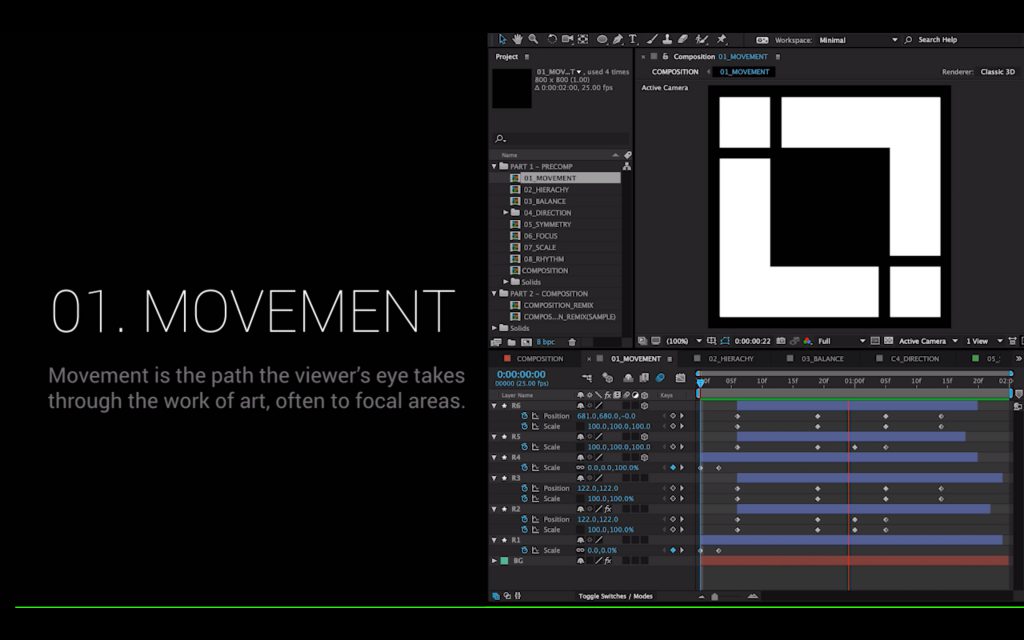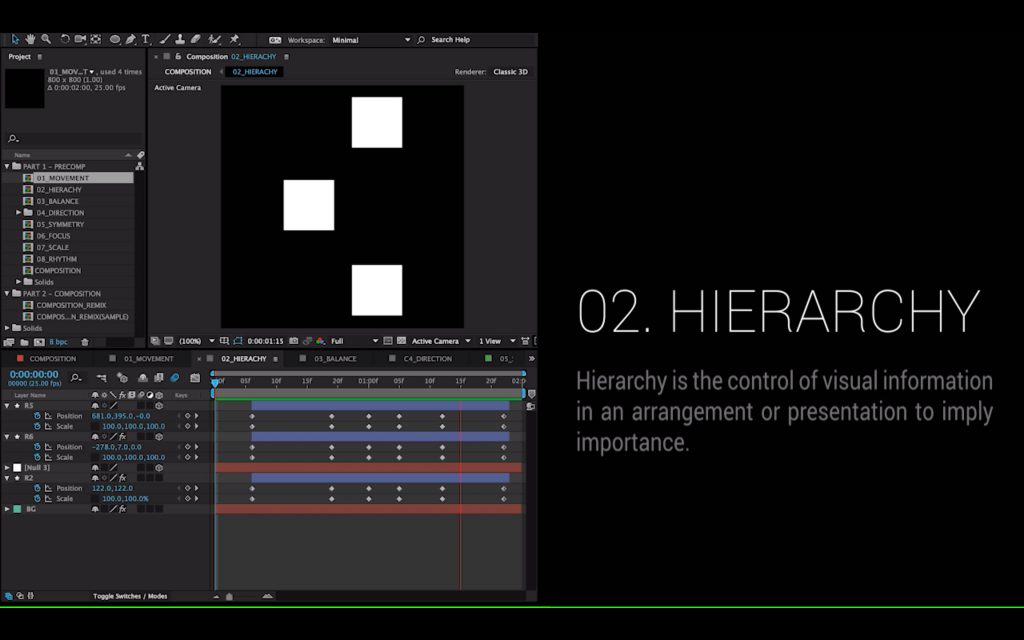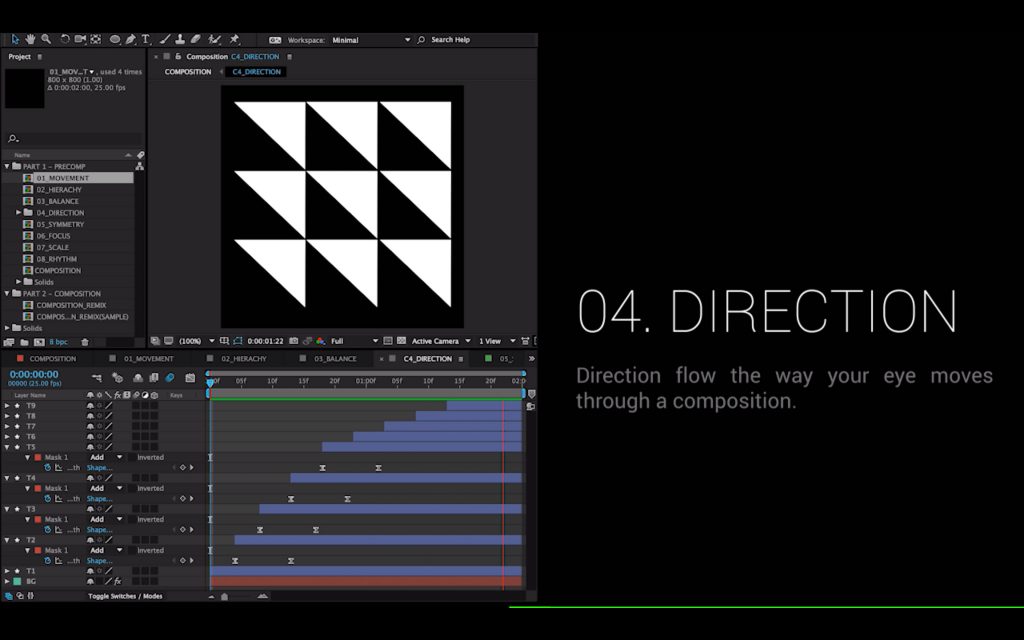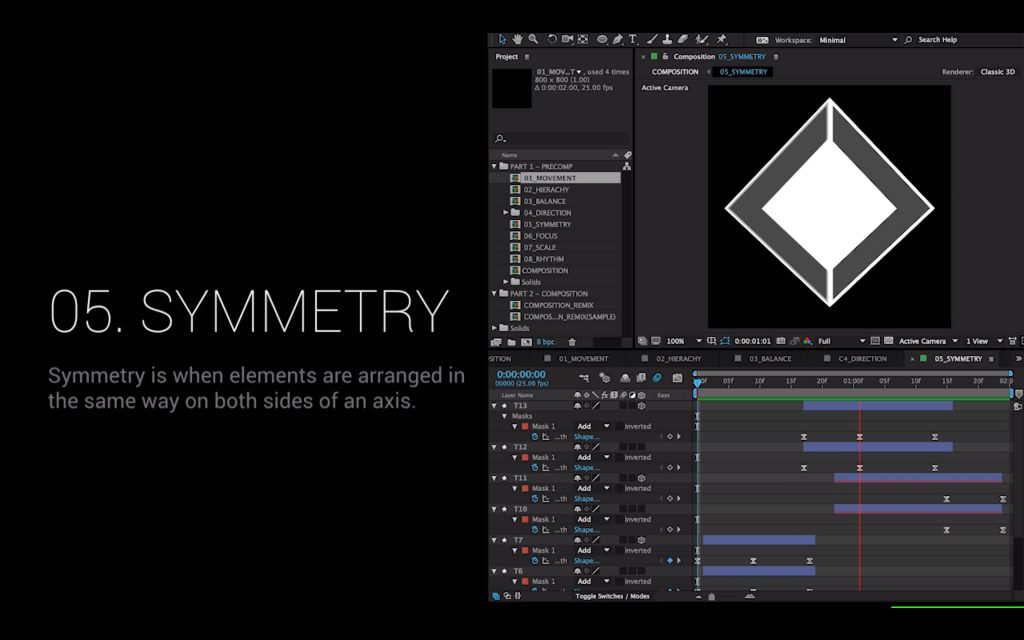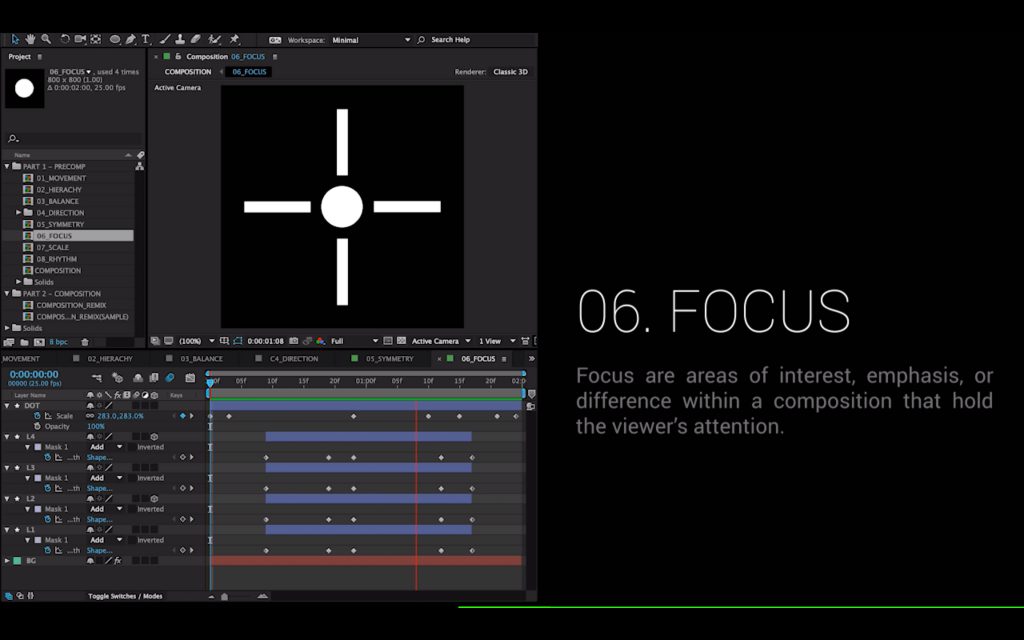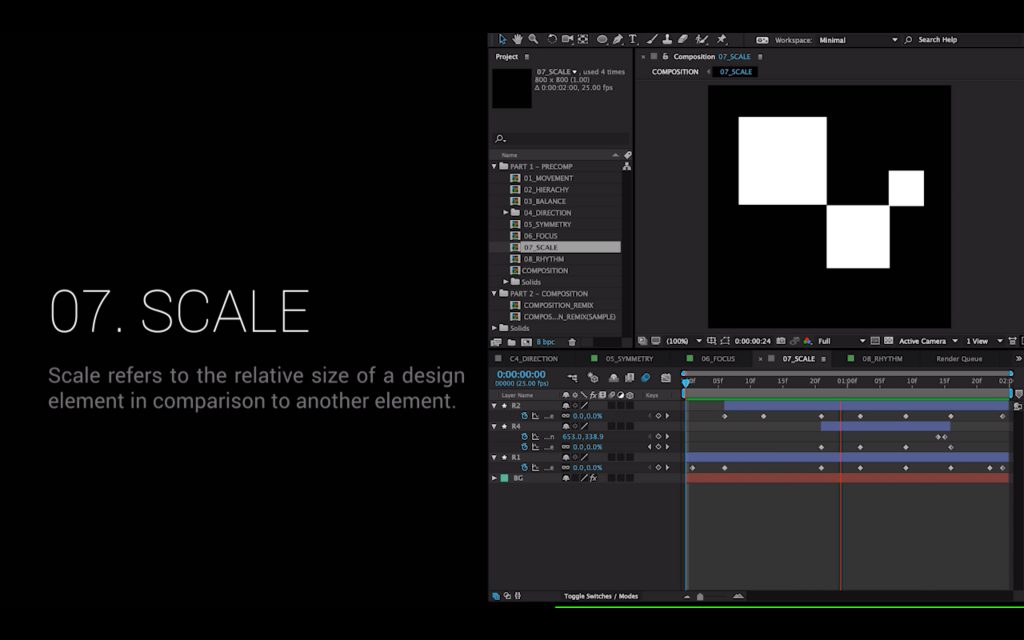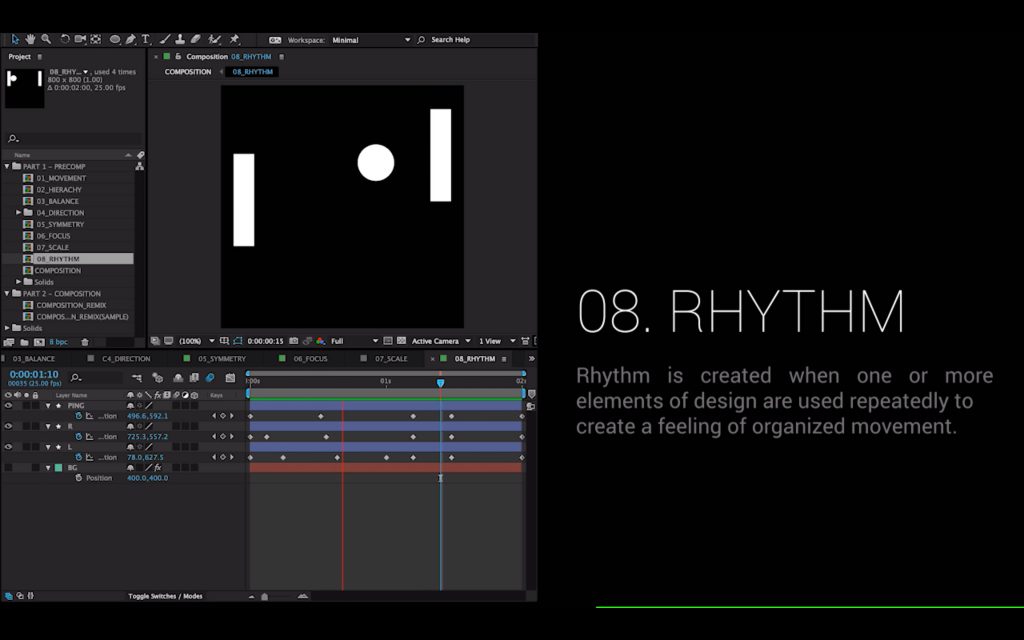[5 min read]
The Introduction
The module focuses on motion graphics and compositing design as pieces of digital footage or animation which create the illusion of motion through series of animated transitions with effects and image-based lighting, modeling and rendering, which is basically the art and science of combining Computer Graphics (CG) elements with real-world imagery either in the form of still images or video.
Key principles, processes and techniques involved in creating motion graphics sequences and visual effects for screen media had been taught utilising compositing methods with global illumination.
From the learning outcomes, students were able to understand existing systems and analyze the techniques to develop their own styles. Students had applied creative technique for motion graphics and compositing using an appropriate range of digital production methods.
The Mindsets
Many years ago, there was a time when the only known graphic design was only that flat and static. Throughout the technology evolvement, software made it easy to create a moving image known as motion graphics.
Nowadays, motion graphics is not just limited on screen-based, but the multimedia display platforms had been expand into a bigger scale especially in LED based technologies such as digital billboard.
It’s everywhere.
Motion graphics is one of the best medium to communicate your ideas and turn it into a storytelling.
To understand why you need motion graphics, you first need to understand what exactly you should be communicating.
The skills that motion graphic designers must possess is not just focus on the software technicality but it’s more towards on how you present the ideas with the most effective ways by considering creativity, aesthetics & design ethics.
The Learning Process
The fundamentals of design are the foundation of every visual medium, from graphics design to motion graphics. Designers should aim to understand how each of these design principles actually impact their work.
Case Studies #1:
Basic Principles of Form & Design
__
Through a research study, I’ve came out with this Basic Principles of Form & Design video tutorial for the first assignment, Technical and Motion Graphics Sensibilities.
__
Basic Principles of Form & Design
There are no formulas or fixed rules for good design, but there are some basic principles that will help you create design that is functional, effective, and aesthetically pleasing.
__
Case Studies #2:
Kinetic Typography
__
Kinetic Typography
is the technical name for “moving text”—is an animation technique mixing motion and text to express ideas using video animation. This text is presented over time in a manner intended to convey or evoke a particular idea or emotion.
In motion graphics, it is very important to learn creating manual keyframes so that you can simply understand on how to control your own animation.
Case Studies #3:
Storytelling
__
In motion graphics, creating a good storytelling is mostly rely on facts & data to convey the message as infographics. Below is the brief methodology techniques that had been used.

Developing data as contents
Inspired from the current pandemic Covid19, I’ve created this Public Service Announcement motion graphics animation to explain how to convert a data into infographics animation.
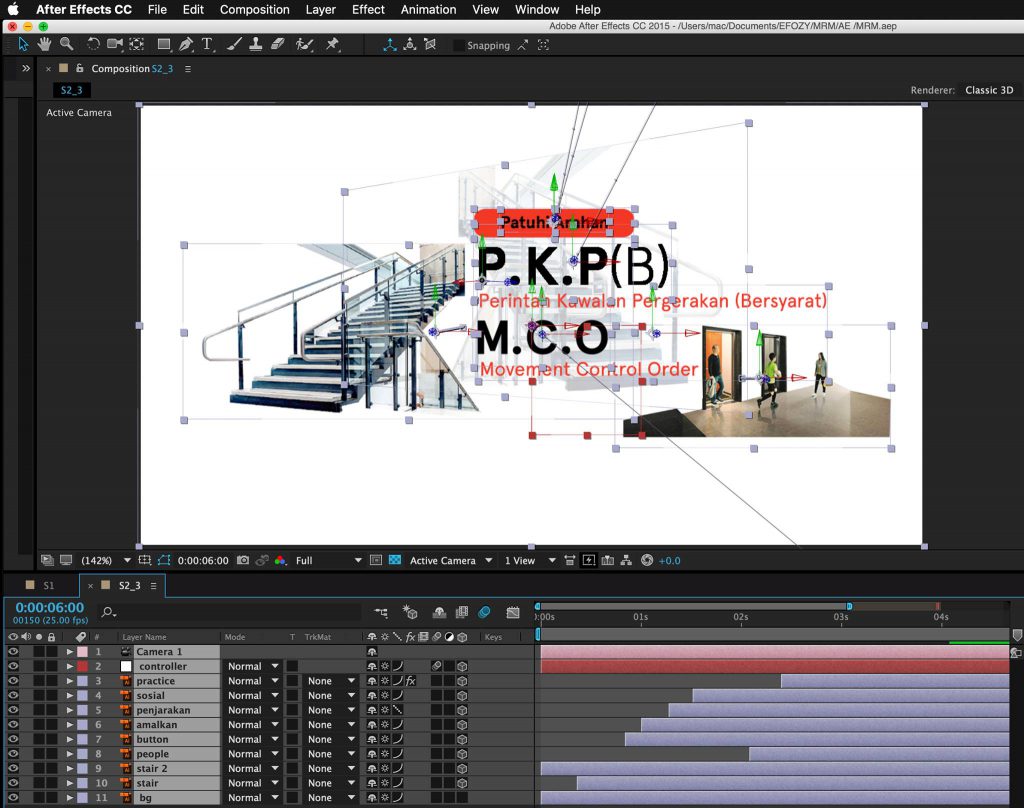
Translating data into infographics
On this step by steps video, I’ve breakdown the stories into pre-comps in After Effects. The concept is just like how people read from sentence to paragraph. So that the animation can flow based on the contents.
As a result, people are not just watching the animation, but they learned about the contents at the same time.
__
_______________________
The Formula
In order to make the learning experience is effective, this is the teaching methods that had been applied to the current syllabus:
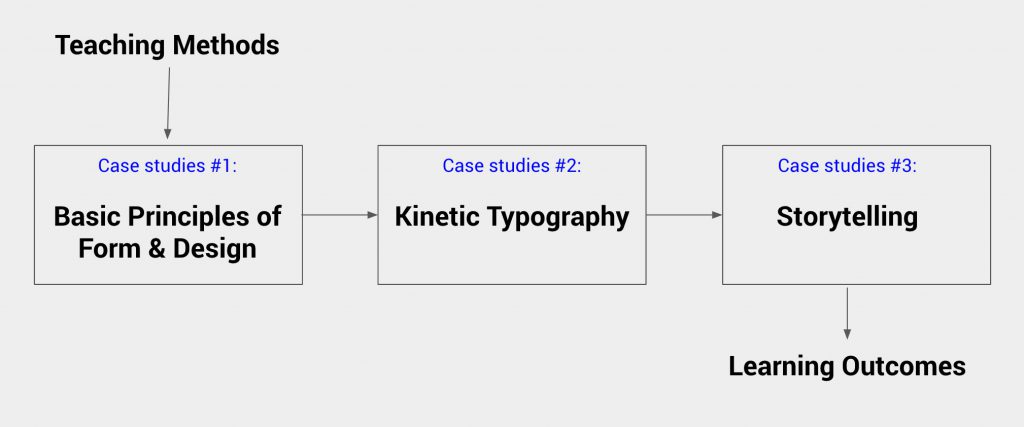
Based on the teaching methods applied, this is the Top 3 of my student’s work for their final project in Motion Graphics & Compositing @ Taylor’s University.
Student’s works
Create Not Copy
By Jasmine Teoh Suan
“I would like to spread the message in the video to other creatives and individuals who create ideas and content. I really hope that there would be an end to blatant plagiarism, and that people would treat it with more importance. “
Check out the design process here
Explore, Adventure, Inspire
By Lee Yu Hui
“The whole animation process was quite fun for me as I was able to explore new effects and editing style.”
Check out the design process here
Love Regardless
By Jennifer Tan
“The idea behind this project came from a tv show made in the 60s called The Munsters. There was one scene that eventually quite iconic.”
Check out the design process here
The Great Dictator – speech by Charlie Chaplin
By Baahy Suhail
“I consulted with Mr. Fauzi during class and he said that this would be a promising topic to work on. He was surprised to hear Charlie Chaplin speak so it was nice to see his reaction when I played him the video. “
Check out the design process here
The Great Dictator – speech by Charlie Chaplin
By Soo Wen Yi
“It took me some time to settle on an idea that I would look forward to work on but I decided on the idea of my perception of time in this year as time flew by of the 2 semesters in movement control order. “
Check out the design process here
Dream
By Zain Riyaz
“We were given the freedom to create anything. I wanted to take this opportunity to experiment with some of the 3D and cell animation possibilities of motion graphics.”
Check out the design process here
Student’s feedbacks
“Throughout 14 weeks of classes and project, I’d say I’ve definitely grown a lot and expanded my knowledge in animation as well.
I can see the improvements that I’ve made along the way, and now looking back at some older projects, I’ve also starting to see where I could’ve improve on.
It has been an amazing journey, and I’m glad that I’ve got the chance and choice to experiment on different styles and ways of working.”
– Taken from student’s report
“I was happy and relieved that I was able to overcome some of the technical issues that I’ve raised to Mr. Fauzi before. I learned that sometimes in animation it’s okay to use visuals to cheat and trick the viewers eyes as long as the animation runs smooth and is not out of place.”
– Taken from student’s report
“From watching the video reference Mr. Fauzi gave me and from what he told me, I found out that motion graphics do not have to be complicated ones.
It could be simple and flat, but what most important is it captures attention, conveys message, and people could learn something from it. Making this abstract motion gave me a lot of education and I actually like my creation too.”
– Taken from student’s report
Conclusion
Despite the restriction of MCO, the whole learning session was done online. As a result, online learning can be achieved successfully with proper planning and effective strategies. Thanks to Taylor’s University, Mike Choong & all of my fellow students.
HOME > CASE STUDIES > Conceptual Design > Critical Thinking > Image Manipulation > Digital Imaging > Motion Graphics > New Media > Type in Motion

